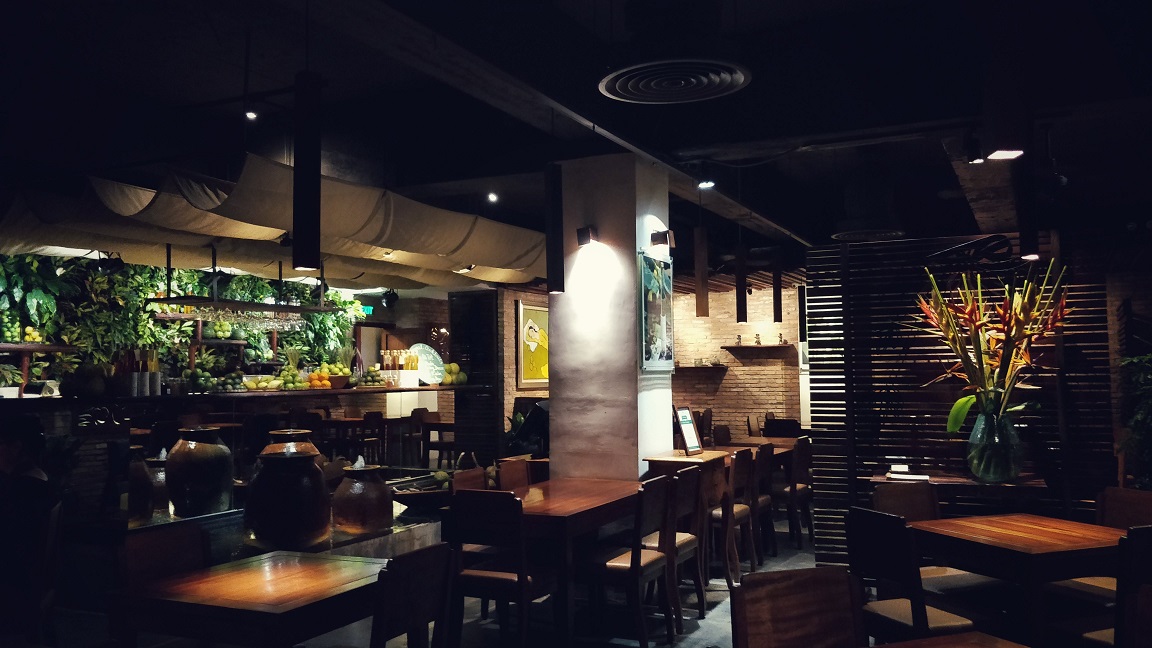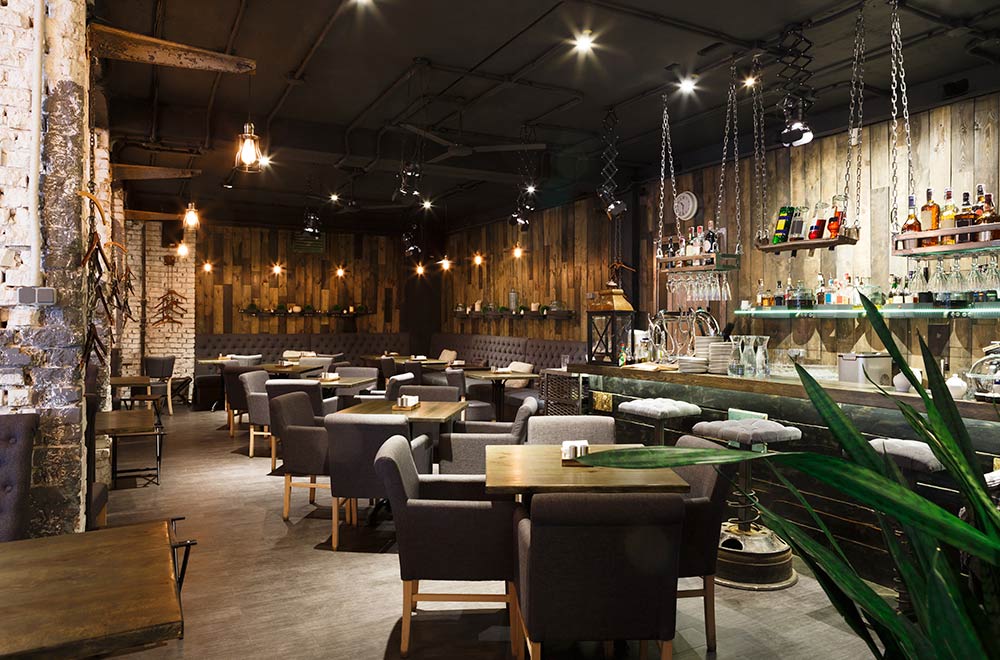Asian Restaurant ISB: A Must-Try Spot for Food Lovers in Islamabad
Asian Restaurant ISB: A Must-Try Spot for Food Lovers in Islamabad
Blog Article
Savor Authentic Asian Food With a Pan-Asian Twist for a Cooking Adventure
Getting started on a cooking journey through genuine Oriental cuisine, improved with a Pan-Asian spin, uses an one-of-a-kind possibility to discover the abundant tapestry of tastes that define the region's diverse cooking practices. As you contemplate these tempting recipes, take into consideration the social stories and historic impacts that shape them, each bite providing a story waiting to be uncovered. Instagrammable restaurants Islamabad.

Discovering Pan-Asian Flavors
In the realm of international gastronomy, Pan-Asian cuisine sticks out for its amazing variety and the harmonious interaction of tastes from various Eastern cultures. This culinary approach commemorates the unique components and rich traditions found across the continent, developing a tapestry of preferences that is both appealing and enjoyable. Key to Pan-Asian food is its ability to balance different flavors-- sweet, salted, spicy, and sour-- while highlighting the freshness and top quality of each ingredient.
From the umami-rich soy sauce of Japan to the intense chili peppers of Thailand, Pan-Asian cuisine provides a comprehensive palette of tastes. These components are often combined in innovative ways, improving dishes with layers of complexity. For example, making use of aromatic herbs such as lemongrass and cilantro, common in Vietnamese and Thai food, includes a refreshing illumination to recipes, while the incorporation of coconut milk provides a luscious, rich structure.
The focus on fresh fruit and vegetables and aromatic flavors ensures that each meal is not only a feast for the palate but additionally for the detects. Pan-Asian food invites restaurants to start a cooking trip, exploring the huge and differed landscapes of Eastern gastronomy with every bite.
Blend Dishes to Try
While Pan-Asian food is celebrated for its standard flavors, the contemporary cooking landscape is progressively accepting fusion meals that blend these timeless components with influences from various other regions. This cutting-edge approach not only honors the abundant heritage of Eastern cooking arts but also presents unique preference experiences that appeal to modern tastes.
A prime instance of such a combination recipe is the Korean-Mexican taco, where marinaded bulgogi beef is wrapped in a warm tortilla, topped with kimchi and a zesty gochujang-infused salsa. This combination marries the bold, mouthwatering flavors of Korea with the lively, fresh components of Mexican food. Likewise, sushi burritos have actually acquired appeal, integrating the delicate artistry of Japanese sushi with the hearty, hand-held ease of a burrito, often including fusion components like tempura shrimp and avocado with a drizzle of wasabi mayo.
An additional noteworthy recipe is Thai curry ramen, which infuses the velvety, fragrant spices of Thai curry right into the comforting broth of standard Japanese ramen, developing a harmonious mix that tantalizes the senses. These combination recipes prolong past mere novelty; they stand for a cooking dialogue in between societies, urging expedition and technology worldwide of Pan-Asian food.
Crucial Ingredients and Flavors
To absolutely value Pan-Asian food, one should recognize the important components and flavors that create its foundation. This diverse culinary style draws from an abundant tapestry of Asian customs, utilizing a harmonious mix of tastes and appearances. Key active ingredients consist of soy sauce, fish sauce, and oyster sauce, which impart a tasty umami depth vital to Oriental dishes. Complementary to these are rice vinegar and mirin, lending a delicate level of acidity and sweet taste.
Fragrant components are crucial, with garlic, lemongrass, and ginger being ubiquitous throughout numerous Pan-Asian recipes. These ingredients give a fragrant base that boosts the complexity of tastes. Seasonings such as star anise, cardamom, and cinnamon introduce warmth and personality, resembling impacts from regions like China and India.

Food Preparation Techniques and Tips
Grasping the art of Pan-Asian food calls for experience with its distinct cooking techniques, each adding to the lively tapestry of tastes this cooking practice is commemorated for. Central to these techniques is the stir-fry, a quick food preparation technique that preserves the dietary integrity and vivid colors of site components. Utilizing a wok, the stir-fry technique permits for also warmth distribution, essential for accomplishing the particular structure and taste balance of Pan-Asian recipes.
Another essential method is steaming, particularly prevalent in Chinese cuisine. This mild technique preserves the all-natural flavors and nutrients of components, making it excellent for fish and shellfish and vegetables. Dumplings, a cherished staple, usually profit from steaming, causing soft, succulent textures.
Grilling, additionally essential, presents great smoky depths to recipes such as Oriental bulgogi or Japanese yakitori (Chinese food Islamabad). This technique typically entails marinading active ingredients, allowing tastes to pass through deeply before cooking over an open flame or warmer
Finally, grasping the art of balancing tastes-- pleasant, sour, salty, bitter, and umami-- is critical. Appropriately layering these aspects can raise a dish from ordinary to extraordinary, supplying a complicated and pleasing culinary experience that embodies the significance of Pan-Asian cuisine.
Eating Experiences Worldwide
Across the world, Pan-Asian cuisine provides an unparalleled dining experience, commemorated for its rich tapestry of tastes and dynamic discussions. This cooking phenomenon has actually transcended social limits, capturing the hearts and tastes of food lovers worldwide. In cosmopolitan cities fresh York, London, and Sydney, Pan-Asian dining establishments function as melting pots where cooking traditions from Thailand, Japan, China, and beyond converge, giving diners with a diverse mix of meals that highlight the area's variety.
The visite site worldwide allure of Pan-Asian cuisine depends on its capacity to offer both authenticity and development. Cooks masterfully wed conventional components such as lemongrass, soy sauce, and miso with contemporary strategies, causing recipes that are both refreshingly brand-new and familiar. This fusion allows diners to get started on a culinary trip that values heritage while accepting modernity.
Additionally, eating experiences are boosted via attentively developed environments that reflect the ethos of Pan-Asian aesthetics. From minimalist Japanese-inspired interiors to lively Thai-themed areas, each dining establishment uses a special atmosphere that complements the culinary offerings. Therefore, patrons are not simply consuming a meal yet partaking in a social experience, making Pan-Asian eating a really worldwide phenomenon.
Conclusion
The expedition of Pan-Asian food supplies an extensive understanding of the complex interplay of flavors and culinary traditions across Asia. By welcoming combination meals such as Thai curry ramen his response and sushi burritos, the cooking journey not just highlights the flexibility of typical ingredients but additionally showcases ingenious modern strategies. This gastronomic adventure, enriched by cooking approaches and essential seasonings, offers a distinct possibility to appreciate the multiculturalism and cooking creativity that define Pan-Asian food on an international scale.
Embarking on a cooking trip with genuine Oriental food, improved with a Pan-Asian twist, supplies a special opportunity to check out the rich tapestry of tastes that define the area's diverse cooking traditions.In the world of worldwide gastronomy, Pan-Asian food stands out for its exceptional diversity and the unified interaction of tastes from different Eastern cultures. Trick to Pan-Asian cuisine is its capacity to balance different tastes-- pleasant, salty, spicy, and sour-- while highlighting the quality and quality of each component.

Report this page